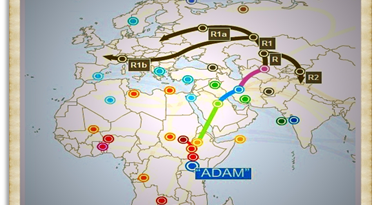Brain capacity (Cro-Magnon Man)
Extract of the book: Dawn of the Lost Civilisation (Brain capacity (Cro-Magnon Man))
At roughly 3.2 billion base pairs, the Neanderthal genome is about the size of the modern human genome. According to preliminary sequences, 99.84% of the base pairs of the modern human and Neanderthal genomes are identical, compared to humans sharing around 94% of base pairs with the chimpanzee. The researchers recovered ancient DNA of Neanderthals by extracting the DNA from the femur bones of three 38,000-year-old female Neanderthal specimens from Vindija Cave, Croatia, and other bones found in Spain, Russia, and Germany. The project faced many difficulties, including the contamination of the samples by the bacteria that had colonised the Neanderthal’s body, the humans who handled the bones at the excavation site and also at the laboratory. So, we must be realistic in the outcomes given and acknowledge that future samples may vary in regards to investigations into cro-magnon man’s ancestors.
Another comparison is in the cranial capacities of this species. Within the human population, studies have been conducted to determine whether there is a relationship between brain size and a number of cognitive measures. Early anthropologists and psychometricians found these correlations and even modern studies (which began with Van Valen 1974) also suggested a similar correlation with Jensen & Johnson 1994, in ‘Race and Sex differences in Head Size and IQ’. They wrote
“In all of the 25 independent studies we have found in the literature, nonzero positive correlations between head measurements and intelligence measurements to be found, all but five with correlations significant beyond the 0.5 confidence level. The average correlation between various external head size and IQ is close to 0.15. But external head size is rather weak proxy for brain size. Two recent studies have measured brain size per se by means of magnetic resonance imaging (MRI) and found correlations with IQ in the 0.3 to 0.4 range (Andreasen et al.,1993 Willerman, Schulz, Rutledge, & Bigler, 1991).”
Therefore, just how intelligent was Homo Superior in comparison to us and other groups in prehistory?

Today’s human Brain (Modern Man) is on average 1380cm3, while the Homo Superior’s brain averaged 1660cm3, so they are (on average) 20% more intelligent than us. On the IQ scale that would mean that ‘Modern Man’ has an IQ of between 90 and 110 points (Stanford–Binet Intelligence Scale). While Homo Superior, would have an IQ between 108 and 132 (classified as High Average to Superior held by the top 7% of the present population) – hence my new Homo Superior (cro-magnon man) classification.
We can see the same correlation in other animals such as the size of Wolfs and Dogs – the dog’s brain is a deterioration of the animal it used to be in the wild. It does not mean that they are stupid, or their lives are poor; in fact, one would suggest (if you were a dog) that their lives today are much more progressive than the life they once lived. But if man was wiped out by disease tomorrow, how many dogs would survive in the long term – It would not be beyond thinking that dogs would become extinct without man to look after them?
Can we not use this same analogy on Modern Man in comparison to Homo Superior (cro-magnon man)?
For if the sun’s electromagnetic radiation increased through our Van Allen magnetic belt that surrounds the earth, our power stations would go into ‘melt-down’ and would work no longer, leaving the world without electricity – how many ‘modern day’ advanced, sophisticated and cultured people would survive, long term, without electricity, gas and petrol?
Dogs need man to help to survive their ‘luxury’ lifestyles and man needs technology for the same reason. Wolves and Homo Superiors (cro-magnon man) are naturally ‘wild’ animals of superior intelligence that allow them to adapt to ‘any’ environment and not to simply survive but moreover, grow and thrive within the environment, without fear of extinction. The other interesting comparison with brain capacity and IQ can be found in the fact that the further north you travel, the higher the IQ of a species. This includes both man and wolf. If we take this fact, we have to think about the reasons for this occurrence. Is this growth a product of the environment and weather, or does the higher intelligence allows a species to travel further, as its adaptability can overcome the environment better than someone with a lesser capacity?
In our last chapter, we theorised that the last Homo migration ‘Out of Africa’ by Sapiens 50,000 years ago, led to an exodus from southern Asia about 30,000 years ago to Europe as a consequence of multiple mutations. This interbreeding brought an unknown kind of humanoid – Homo Superior. With a new kind of thinking as they had much larger brains with immense IQ, thus allowing them to move to fresh and greener pastures, following the ample food supply through their natural migration patterns. This increase in food allowed for an increased brain capacity, and the growth of imagination led them to develop and create brand new forms of transportation allowing them and their families to travel faster and for longer than before, through dangerous forests full of deadly animals.
For a species that had a natural ability to both swim and walk on land, with the vast waterways that became Palaeolithic Europe spreading out for thousands of miles in all directions (let alone the sea routes within shoreline visibility), the boat would have been the method of choice. The environment was full of marsh lands, lakes and forests from the last ice age and water reeds would have grown with abundance. The simplest way to make a boat is to gather dried reeds into bundles and then tie them together. Almost instantly and without extensive effort, you have a floating reed boat. Over the space of a day you the tied and twisted fell bundles would produce a large boat that can travel many thousands of miles and allow you to fish in safety in the middle of a landscape full of lions, tigers, wolves and bears.
Further information on Cro-Magnon man can be found: https://youtu.be/V825KgfDDeM
Further Reading
For information about British Prehistory, visit www.prehistoric-britain.co.uk for the most extensive archaeology blogs and investigations collection, including modern LiDAR reports. This site also includes extracts and articles from the Robert John Langdon Trilogy about Britain in the Prehistoric period, including titles such as The Stonehenge Enigma, Dawn of the Lost Civilisation and the ultimate proof of Post Glacial Flooding and the landscape we see today.
Robert John Langdon has also created a YouTube web channel with over 100 investigations and video documentaries to support his classic trilogy (Prehistoric Britain). He has also released a collection of strange coincidences that he calls ‘13 Things that Don’t Make Sense in History’ and his recent discovery of a lost Stone Avenue at Avebury in Wiltshire called ‘Silbury Avenue – the Lost Stone Avenue’.
Langdon has also produced a series of ‘shorts’, which are extracts from his main body of books:
For active discussions on the findings of the TRILOGY and recent LiDAR investigations that are published on our WEBSITE, you can join us and leave a message or join the debate on our Facebook Group.


